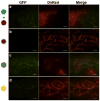Mammospheres from murine mammary stem cell-enriched basal cells: clonal characteristics and repopulating potential
- PMID: 23466563
- PMCID: PMC3622180
- DOI: 10.1016/j.scr.2013.01.007
Mammospheres from murine mammary stem cell-enriched basal cells: clonal characteristics and repopulating potential
Abstract
Identification of murine mammary stem cells (MaSCs) has been attempted with various in vitro and in vivo assays. While, the in vivo repopulation assay remains as the most definitive assay for MaSC detection, it is expensive, time-consuming, and technically challenging. The in vitro mammosphere assay was considered unreliable because of major concerns about its clonal origin. In the current study, co-culture experiments with mammary cells from fluorescent protein transgenic mice and time-lapse video microscopy revealed that >90% mammospheres formed from sorted basal epithelial-enriched cells were of clonal origin in terms of stem cell. These basal-cell derived mammospheres were further distinguished morphologically in a 3-dimensional extracellular matrix culture and functionally in the in vivo repopulation assay. Transplant of single mammospheres or the resultant 3-dimensional solid structures into gland-free mammary fat pads yielded a 70% success rate of multilineage mammary gland reconstitution. Thus, this in vitro sphere formation and differentiation assay is a reliable alternative to the in vivo repopulation assay for the study of MaSCs.
Copyright © 2013 Elsevier B.V. All rights reserved.
Figures





References
-
- Asselin-Labat ML, Vaillant F, Sheridan JM, Pal B, Wu D, Simpson ER, et al. Control of mammary stem cell function by steroid hormone signalling. Nature. 2010;465:798–802. - PubMed
-
- Bandyopadhyay A, Dong Q, Sun LZ. Stem/progenitor cells in murine mammary gland: isolation and functional characterization. Methods Mol Biol. 2012;879:179–193. - PubMed
-
- Booth BW, Boulanger CA, Smith GH. Alveolar progenitor cells develop in mouse mammary glands independent of pregnancy and lactation. J Cell Physiol. 2007;212:729–736. - PubMed
-
- Deleyrolle LP, Rietze RL, Reynolds BA. The neurosphere assay, a method under scrutiny. Acta Neuropsychiatrica. 2008;20:2–8. - PubMed
Publication types
MeSH terms
Substances
Grants and funding
LinkOut - more resources
Full Text Sources
Other Literature Sources
Medical

